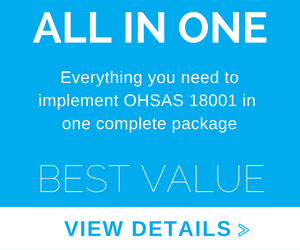What is an Integrated Management System (IMS)?
Organizations often focus on management systems individually, often in silos and sometimes even in conflict. Quality team is concerned with the QMS, often an EHS mangager handles both Environmental and Health and Safety issues, etc.
With an integrated system, you work together, with each function aligned behind a single goal: improving the performance of the entire organization. Instead of silos, you have a coordinated effort which is greater than the sum of its parts and is not only more efficient but more effective. An integrated system provides a clear, uniform image of your entire organization, how they impact each other, and the associated risks. Efficiency is gained from less duplication, and it becomes easier to adopt new systems in future.
Common standards which are simultaneously certified through an integrated audit include:
- ISO 9001 Quality Management Systems, as well as specific sector requirements like:
- AS9100 Aerospace and Defense
- ISO 13485 Medical Devices
- TS 16949 Automotive
- etc.
- Your ability to meet customer requirements
- ISO 14001 Environmental Management Systems
- Your organization’s impact on the environment
- “Outside” the building
- OHSAS 18001 Occupational Health and Safety Management Systems
- The safety and Health of your organization
- “Inside” the building
An IMS allows your management team to create one system that can help to effectively and efficiently deliver your organization’s objectives. From managing employees’ needs, to monitoring risks and hazards, from reducing inefficiencies and maximizing resources, an integrated approach can help you achieve your objectives.
Is it right for you?
Ideally you would have an Integrated Management System that addresses all of your objectives objectives at once, like an executive committee meeting. However, it can be difficult to meet the needs of the various management systems operating within a single business.
Integrated Management is relevant to any organization, regardless of their market. Integrating several management systems into a unified system (who share documentation, policies, procedures and processes) makes sense.
An ideal candidate will have been using one or more management systems and are contemplating the introduction of other systems into the mix.
The Benefits of an Integrated Management System
An IMS can benefit your organization through increased efficiency and effectiveness, and cost reductions while minimizing the disruption caused by several external audits.
It also shows your commitment to increased performance, employee and customer satisfaction, and continuous improvement.
See our OHSAS 18001 Product Selection Guide to learn more about which version is best for you.
ISO Guideline on the Integration of Management Systems
 Contrary to many other types of standards, management system standards cover multiple aspects, levels and functions of an organization and, therefore, their implementation can have a substantial impact on how an organization operates and manages its business processes. In addition, more and more organizations are applying not only one, but a range of management system standards to satisfy their own needs as well as those of external stakeholders.
Contrary to many other types of standards, management system standards cover multiple aspects, levels and functions of an organization and, therefore, their implementation can have a substantial impact on how an organization operates and manages its business processes. In addition, more and more organizations are applying not only one, but a range of management system standards to satisfy their own needs as well as those of external stakeholders.
The book acknowledges that there is a market need for separate management system standards addressing different aspects, issues or risks that organizations need to manage. It provides guidance on how organizations can apply the different standards in a combined way, integrated with their business processes.




